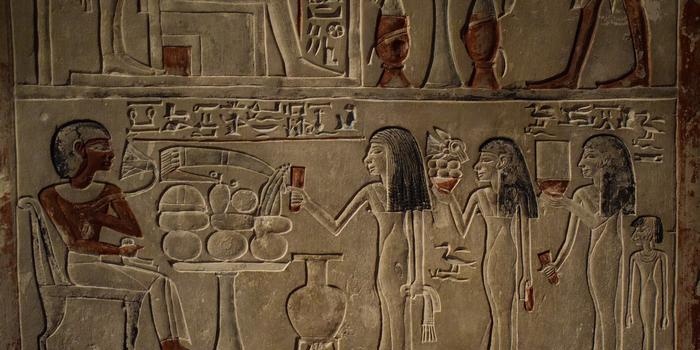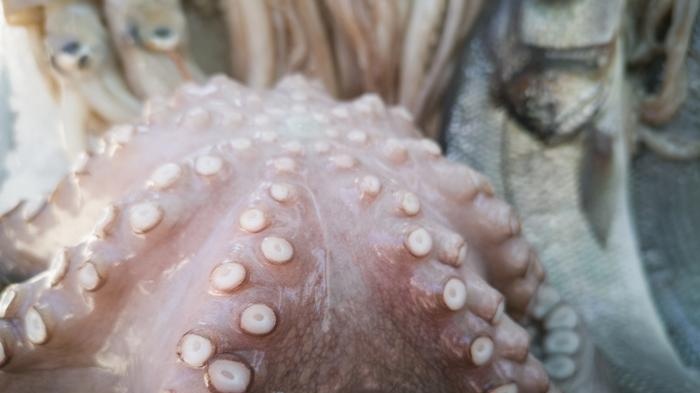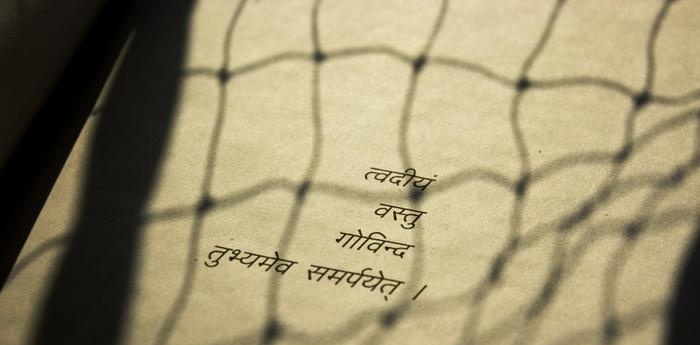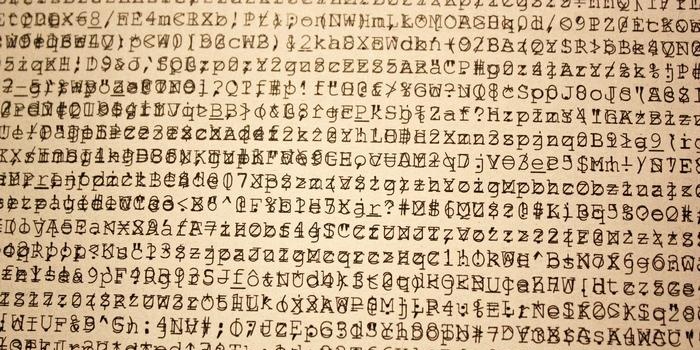How the letter was born |
|
Start with writing material. For almost one and a half thousand years, people wrote on parchment, which was made from calf, goat, sheep and donkey skins. In terms of its qualities, the parchment has left the famous papyrus far behind. It is with the use of new writing material that the transition from a papyrus scroll to a book of an almost modern appearance is associated. We add to the above that in China before the invention of paper, they wrote on silk, which, as you know, is made from the thinnest web of an insect - the silkworm. Secondly, also for centuries (from the 6th to the 19th century), bird feathers were used for writing, appropriately conceived. Feathers of various birds were used: swans, ravens, peacocks (in India). For drawing especially thin lines, the tail feathers of a snipe with a thorn at the end were best suited. And yet, in the overwhelming majority of the writing pens were goose, and therefore, it is the cackling goose that should be recognized as the bird most involved in our culture and education. It was only at the end of the 18th century that the first writing devices made of steel appeared in Europe. But to this day they retain their traditional name - "feathers".
In passing, we note that cuttlefish, in addition to sepia paint, "Supplies" also the so-called "bone"highly prized by draftsmen as an excellent blotting paper and eraser. “Bone” is the remnant of an underdeveloped inner shell of an animal. It is harvested on the seaside in Portugal, North Africa, India.
Before you start writing with freshly made ink, the recipe recommends testing them "On the tongue - only they will be sweet". As you can see, animals supplied everything that a person needs: durable "paper", ink that does not fade in the sun, and tools - feathers. Landmarks of the Indians of North America were the so-called wampums - leather belts embroidered with pieces of shells of one of the snail species. The wampum could play the role of both an ordinary decoration and a written document.On one of them, for example, the treaty of 1682 was perpetuated, according to which William Penn received from the Indians the complete possession of the territory of present-day Pennsylvania (USA). Even in the era of drawing (pictography), people used habits, characteristic features of the behavior of animals, birds, insects in order to express certain abstract concepts. The economic value of the animal and various beliefs associated with it were also taken into account. So, among the North American Indians, a schematic representation of a lightning-snake meant "Quickness", the butterfly personified "Beauty", the jaw of a rattlesnake - "power", deer tracks - "Plenty of game", traces of a thunderous eagle - "bright future", bear traces— "A good omen".
Ancient China was a country with highly developed animal husbandry. Therefore, it is no coincidence that to denote the concept "Happiness", "luck" served here as a hieroglyphic sign "Yang" (ram). Another hieroglyph - "Lu" (deer) meant "success"For centuries, bats have enjoyed special respect among the Chinese. And to this day the word "Fu" means and "bat"and "happiness". Among the ancient Chinese characters were "Tiger", "horse", "boar"... By the way, hieroglyph "Horse" ("ma") used to indicate a similar sounding word "mother" - with the addition of a qualifier, "Key sign" - "woman"... Connecting signs "mouth" and "bird" means "sing" (remember the ancient Babylonian "beget"). Sanskrit - the language of the ancient inhabitants of India - included concepts such as "Gopati" - "chief of the tribe", but literally translated as "owner of cows"; "Gavishti" - "fight" (thirst for acquiring cows). Something similar was observed in the Egyptian hieroglyphic writing: the concept of "king" was depicted as a shepherd's staff, and "Nobility", "nobility" - goats with a print on the neck. The Egyptian hieroglyphic writing did not stand still, it changed and developed over the centuries. If at first the hieroglyphs are either directly (the image of the bull was read "bull"), or indirectly (the drawing of the club meant "Libya": this type of weapon was characteristic of the Libyans, the neighbors of the Egyptians) "portrayed" a word, a concept, then later they increasingly began to convey combinations of letters and even individual letters (sounds).
A long and winding path has led humanity to the alphabet. And it was born in the depths of the Egyptian hieroglyphic writing. Practical needs gave rise to cursive writing (the so-called hieratic writing). These were already, as it were, half-hieroglyphs, more simplified conveying object images. An increasing number of signs were assigned the meaning of one or two consonants. Then, in the XIII-XII centuries BC, under the influence of the forms of Egyptian hieroglyphs and using the idea of the alphabet, the ancient Semitic tribes created their letters. The next stage of development is noted among the Phoenicians, and already from them the alphabet was borrowed by the Greeks, who adapted it to the needs of their language. The Phoenician alphabet had letters "aleph" (ox), "Gimel" (camel), "Nun" (fish), "Kof" (a monkey), "Lamed" (bee sting) - in this it is easy to see the Egyptian tradition.The same names of letters are easily guessed in modern Arabic (Aleph, Jim, Nun) and Hebrew, used in Israel (Aleph, Gimel, Nun, Kof) alphabets.
A few words about the so-called bustraphedon - a way of writing in which the first line is written from right to left, the second - from left to right, etc. Bustraphedon was used in Cretan, Hittite, South Arabian, Etruscan and Greek writing, and in translation this term means something like “ turn of the bull "(Greek bus - bull and strepho - I turn). Now let's see how the Greeks dealt with the alphabet borrowed from the Phoenicians. After all that has been said above, the original meaning of the word "alphabet", which now means "a set of letters of writing" in all European languages, will not cause much surprise. In decrypted form, this word appears before us as ... Bycod. The oldest Phoenician writing was hieroglyphic. To convey this or that concept in writing, the Phoenicians, like the Egyptians, used the corresponding drawing. For example, a schematic representation of a bull's head meant "bull", and a stylized drawing of a hut corresponded to the word "Beit"meaning "house". When later hieroglyphic writing gave way to letter writing, the letters, now only vaguely reminiscent of previous drawings, nevertheless retained the old, familiar names. Per "A", as the first in the word "calf, bull", the name stuck "aleph", behind the letter "B" — "Beit" and so on (remember the old Russian alphabet: "Az", "beeches", "lead", "verb" etc.).
Phoenician "Gimel" became the "gamma" among the Greeks, "Nun" - "neither" "Kof" - "koppa". So, if you have in mind the deepest historical roots, the progenitors of ultramodern terms Alpha rays and "Gamma rays" are the longtime companions of man - the bull and the camel ... Krasnopevtsev V.P. |
| Spaniels | Horse suits |
|---|
New recipes
 Figuratively speaking, animals have worked hard to educate humanity.
Figuratively speaking, animals have worked hard to educate humanity. And thirdly, "Literally left a mark on human culture" (the expression of the English naturalist Frank Lane) marine animals - cuttlefish: the liquid extracted from the ink sacs of these cephalopods has replaced the ink for a long time. They were called that: "sepia" - by the scientific name of the cuttlefish sepia (and in common parlance - "Indian ink"). The ink liquid of cephalopods (cuttlefish, squid, octopus) has an extraordinary coloring ability. A cuttlefish dipped in a 5500 liter water tank takes only 5 seconds to dye "Ink" all the water. Giant squids, throwing out an ink cloud, cause turbidity of sea water for hundreds of meters.
And thirdly, "Literally left a mark on human culture" (the expression of the English naturalist Frank Lane) marine animals - cuttlefish: the liquid extracted from the ink sacs of these cephalopods has replaced the ink for a long time. They were called that: "sepia" - by the scientific name of the cuttlefish sepia (and in common parlance - "Indian ink"). The ink liquid of cephalopods (cuttlefish, squid, octopus) has an extraordinary coloring ability. A cuttlefish dipped in a 5500 liter water tank takes only 5 seconds to dye "Ink" all the water. Giant squids, throwing out an ink cloud, cause turbidity of sea water for hundreds of meters. In ancient times, very persistent black ink obtained from oak "Nuts" - painful growths on the leaves, inside which the larvae of the walnut insect live. The extraordinary durability of this ink was explained, apparently, by their careful preparation, as can be judged from the recipe of the 17th century: "Evaporate a little hop ... and lithium with a shell, for every nut, 3 or 4 shells"... Further in the recipe, it is specifically stipulated that ink should not be poured into the inkwell at once, but as needed:
In ancient times, very persistent black ink obtained from oak "Nuts" - painful growths on the leaves, inside which the larvae of the walnut insect live. The extraordinary durability of this ink was explained, apparently, by their careful preparation, as can be judged from the recipe of the 17th century: "Evaporate a little hop ... and lithium with a shell, for every nut, 3 or 4 shells"... Further in the recipe, it is specifically stipulated that ink should not be poured into the inkwell at once, but as needed: The Babylonians have a concept "beget" indicated on the letter by a combination of signs "bird" and "egg".
The Babylonians have a concept "beget" indicated on the letter by a combination of signs "bird" and "egg". So, the hieroglyph "black ibis" was unambiguous to the combination of consonants (the Egyptians did not write vowels) "g" and "m", and "hare" - "v" and "n", "swallow" - "v" and "r". The alphabetical sign "owl" conveyed the consonant "m", "white-headed kite" - a guttural semi-consonant, which is now conventionally pronounced as a vowel "a". There were hieroglyphs for "duck", "beetle", "bee" and others.
So, the hieroglyph "black ibis" was unambiguous to the combination of consonants (the Egyptians did not write vowels) "g" and "m", and "hare" - "v" and "n", "swallow" - "v" and "r". The alphabetical sign "owl" conveyed the consonant "m", "white-headed kite" - a guttural semi-consonant, which is now conventionally pronounced as a vowel "a". There were hieroglyphs for "duck", "beetle", "bee" and others. It is very interesting to trace how the same graphic sign gradually transformed in different writing systems. Take, for example, one letter - Latin N... At the beginning, even among the Egyptians, it was an almost natural image of a snake; in the oldest Dophenician alphabet, the sign became much more schematic; The Phoenicians simplified it even more, and the Greeks, consistently changing the sign towards greater abstraction, turned it in the end into a letter close to the modern writing of the Latin letter N.
It is very interesting to trace how the same graphic sign gradually transformed in different writing systems. Take, for example, one letter - Latin N... At the beginning, even among the Egyptians, it was an almost natural image of a snake; in the oldest Dophenician alphabet, the sign became much more schematic; The Phoenicians simplified it even more, and the Greeks, consistently changing the sign towards greater abstraction, turned it in the end into a letter close to the modern writing of the Latin letter N. Creating their writing on the Phoenician basis, the ancient Greeks modified the borrowed letter signs, but adopted the names of many of them. This is how the Greek "alpha" and "beta" (otherwise - "vita") appeared - the compound of the compound word "alphabet", which later passed into all European languages.
Creating their writing on the Phoenician basis, the ancient Greeks modified the borrowed letter signs, but adopted the names of many of them. This is how the Greek "alpha" and "beta" (otherwise - "vita") appeared - the compound of the compound word "alphabet", which later passed into all European languages.









